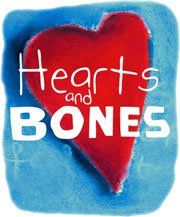Joseph Pilates
Joseph Pilates developed his exercise method initially to improve his own strength and health. He later developed Pilates into the successful physical therapy used by many people today.
Pilates' work started with his own body
The Pilates exercise method was devised by German-born Joseph Pilates (1880–1967). Joseph was a frail, sickly youngster. To improve his own strength and health, he developed a series of therapeutic exercises using elements from a wide variety of training methods. These methods included yoga, Zen, gymnastics, dance, weight training, and ancient Greek and Roman physical regimens.
'Contrology' and rehabilitation
Joseph moved to England in 1912 where, because of his nationality, he was interned at the outbreak of World War 1. During his internment, he taught fellow internees the exercise methods he had used so successfully on his own body. He also began devising a system of floor-based exercises he called ‘Contrology’, meaning the science of control.
Later, Joseph further developed his physical therapies to help rehabilitate bed-ridden internees suffering serious war injuries. He experimented by attaching springs to hospital beds to provide resistance and help patients build muscle strength. These beds gave rise to the equipment used in Pilates therapy today.
After the war, Joseph returned to Germany and continued working on his exercise method. He met Rudolf van Laban, famous for devising the commonly used Laban dance notation, who started to include some of Joseph’s exercises into his teaching.
Launch of Pilates
In 1926, Joseph moved to America where he and his wife Clara, a nurse, established their first studio in New York. His method became popular amongst the dance and performance community.
Since then, a much wider audience has adopted Pilates’ whole body approach to improving strength, mobility, and alignment. This audience ranges from athletes and performers through to people seeking rehabilitation from injuries or conditions.
Pilates' 8 guiding principles and Hearts and Bones' approach
All you have taught me about my body remains a part of my training. I regularly think of you as I dance."
- Rebecca



Hearts & Bones Pilates Centre. All rights reserved. Please comment to: heartsandbonespilates@gmail.com
Terms & conditions